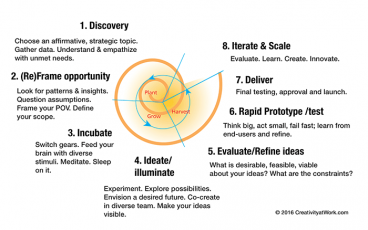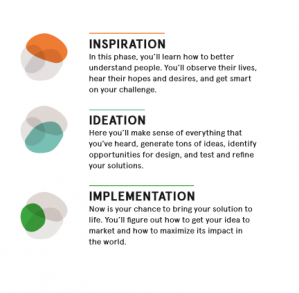SEDA/SEDA301/Identifying and Developing Socially Innovative Solutions
Contents
Learning Pathway Overview: Identifying and Developing Socially Innovative Solutions
In the last Learning Pathway, we have explored the theory behind social entrepreneurship and social enterprise, have examined environmental factors influencing their development and operation, and have looked at different types of examples of social enterprises from across different regions of the world. By now you will realise that social entrepreneurs help to address a wide array of challenges encompassed within the different UN Sustainable Development Goals.
In the final Learning Pathway of this course, we're going to answer the following questions:
- How do social entrepreneurs identify social needs in their communities?
- How do social entrepreneurs develop innovative solutions which address the needs identified?
As you might expect, the answer to these questions will vary according to the entrepreneur and their context. However, there are some broad level approaches and tools that are available to help social entrepreneurs develop effective and sustainable initiatives in their communities. We will examine some different tools, approaches and frameworks which social entrepreneurs may use - information which will be very useful for you should you be thinking about starting up your own social enterprise.
Understanding social issues/needs in your local community
So, you're a budding social entrepreneur and your deepest desire in life is to create some sort of social impact in your community. How might you do this? How do you know what issues are most relevant or pressing? History has shown us that the most successful attempts at creating positive social change start at the grassroots level. When issues in a community are identified by community members, and solutions are developed in collaboration with the community, then the impact and sustainability of social initiatives is enhanced. Top-down approaches, or approaches where interventions and initiatives are designed by someone who does not understand the specific context and are based upon what they perceive to be the problems that exist within a community, have been criticised as failing to account for the needs and wishes of those people in the community. The need to stop and listen to people and understand their world-view is beautifully captured in the below TED Talk by Dr Ernesto Sirolli. Dr Sirolli founded the Sirolli Institute which is a social enterprise that teaches community leaders how to tap into the creativity and passions of individuals within their own communities. He advocates for 'responsive, person-centered approaches to local economic development'. In the video below, Dr Sirolli talks about the life-changing experiences he had as a young charity worker in Africa which led him to develop his trademark program, Enterprise Facilitation. The first 10 minutes are particularly relevant to the topics presented this week. Enjoy!
Another important component to developing effective solutions to social challenges involves understanding not only the challenges and needs within a community, but also their existing strengths and capabilities which can be harnessed within social interventions. Lecture 8 explores the asset-based model of community development in greater depth. The reading associated with the lecture is the Community Assessment Tools guide used by Rotary for their projects. It provides some great guidelines for different data collection strategies, as well as questions that you might like to consider when developing your own strategies for social change.
Using design thinking to develop innovative ideas
The quote from Einstein provided above is highly relevant today. In order to design better services, experiences and solutions to current social problems, we need to develop new ways of thinking. Designing solutions that are effective requires that the thinking process is human-centered. This is where design thinking, a new way of thinking, is an effective approach which can be, and is being utilised by social entrepreneurs.
Businesses, social enterprises and non-profits are all starting to embrace design thinking as the way to to develop better solutions to problems faced by their customers and/or beneficiaries. A number of different frameworks have been developed to illustrate the stages involved in the design thinking process.
The framework above illustrates the cycle involved in design thinking, which commences with observation of needs and framing of opportunities, and then moves on the ideation phase where creative thinking processes are used to experiment with ideas and develop possible solutions. After a period of testing and refinement, the idea is then implemented. Presentation as a spiral represents the iterative nature of htis process, and the need to revisit certain stages as ideas change shape and grow.
Another fabulous source of information about the design thinking process is IDEO, an award-winning global design firm that takes a human-centered, design-based approach to helping organizations in the public and private sectors innovate and grow. Their process for human-centered design incorporates three stages:
As you can see from the above image, much overlap exists between IDEOs three stage process and the spiral process provided above. The first key takeaway from both of these diagrams is the importance of observing and empathising with the individuals and communities you seek to support. The second key takeaway is the need to provide space to explore ideas for solutions to social needs (ideation). A number of different tools and methods are available to social entrepreneurs, some of which are detailed in greater depth in the resources to review box below, including Lecture 8. In this lecture, guest presenter Rachel Taylor presents for us a number of different strategies that social entrepreneurs may use to support the generation and consolidation of socially innovative ideas. A PhD Candidate at the Australian Innovation Research Centre (AIRC) within the Tasmanian School of Business and Economics (TSBE), Rachel's PhD study is examining the antecedents and consequences of social innovation within non-profit organisations and social enterprises in the Australian disability sector.
Learning Pathway Activities




